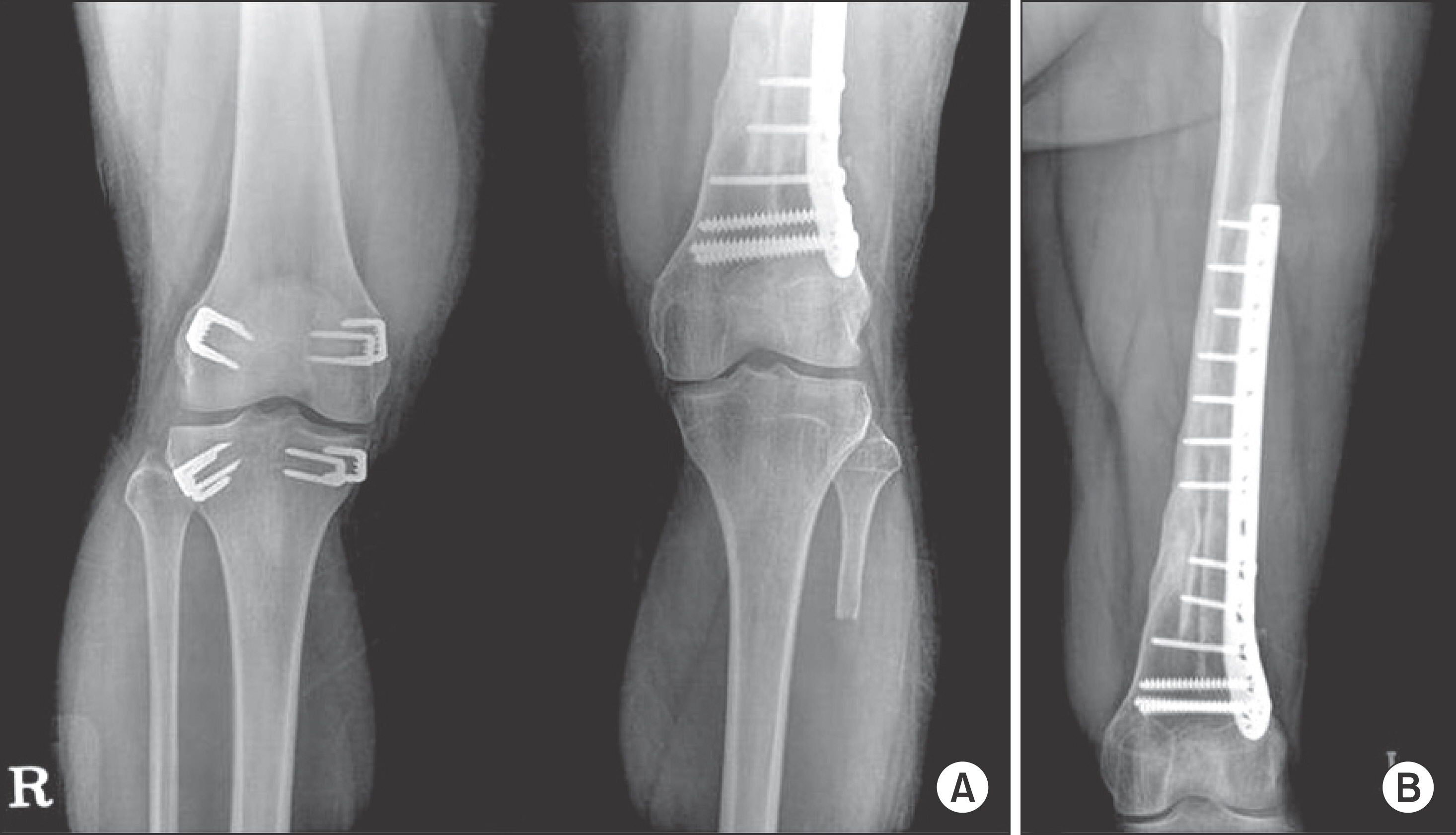J Korean Bone Joint Tumor Soc.
2014 Jun;20(1):41-45. 10.5292/jkbjts.2014.20.1.41.
Low Grade Chondrosarcoma Presenting as Progressive Valgus Limb Deformity in a Growing Period
- Affiliations
-
- 1Orthopaedic Oncology Clinic, National Cancer Center, Goyang, Korea. ostumor@ncc.re.kr
- 2Department of Pathology, National Cancer Center, Goyang, Korea.
- KMID: 1707765
- DOI: http://doi.org/10.5292/jkbjts.2014.20.1.41
Abstract
- A femoral bone tumor causing a valgus deformity by affecting the growth plate was found. Long intramedullary diaphyseal tumor was separated by septum at the metapysis. Low grade chondrosarcoma was confirmed diagnosed by pathologists. Progressive limb deformity can be a sign of bone tumor in growing period.
Figure
Reference
-
References
1. Kusuzaki K, Murata H, Takeshita H, et al. Usefulness of cy-tofluorometric DNA ploidy analysis in distinguishing benign cartilaginous tumors from chondrosarcomas. Mod Pathol. 1999; 12:863–72.2. Aprin H, Riseborough EJ, Hall JE. Chondrosarcoma in children and adolescents. Clin Orthop Relat Res. 1982; 166:226–32.
Article3. Haygood TM, Teot L, Ward WG, Allen A, Monu JU. Low-grade chondrosarcoma in a 12-year-old boy. Skeletal Radiol. 1995; 24:466–8.
Article4. Young CL, Sim FH, Unni KK, McLeod RA. Chondrosarcoma of bone in children. Cancer. 1990; 66:1641–8.
Article5. Huvos AG, Marcove RC. Chondrosarcoma in the young. A clinicopathologic analysis of 79 patients younger than 21 years of age. Am J Surg Pathol. 1987; 11:930–42.
Article6. Ishida T, Iijima T, Goto T, Kawano H, Machinami R. Concurrent enchondroma and periosteal chondroma of the humerus mimicking chondrosarcoma. Skeletal Radiol. 1998; 27:337–40.
Article7. Yamamoto Y, Washimi O, Yamada H, Washimi Y, Itoh M, Kuroda M. Concurrent periosteal chondroma and enchondroma of the fibula mimicking chondrosarcoma. Skeletal Radiol. 2006; 35:302–5.
Article8. Babinet A, de Pinieux G, Tomeno B, Forest M, Anract P. Intracortical chondrosarcoma. A case report. J Bone Joint Surg Am. 2003; 85-A:533–5.9. Leerapun T, Hugate RR, Inwards CY, Scully SP, Sim FH. Surgical management of conventional grade I chondrosarcoma of long bones. Clin Orthop Relat Res. 2007; 463:166–72.
Article10. Greenspan A, Jundt G, Remagen W. Differential diagnosis in orthopaedic oncology. 2nd ed.Philadelphia: Lippincott Williams & Wilkins;2007. p. 212–7.
- Full Text Links
- Actions
-
Cited
- CITED
-
- Close
- Share
- Similar articles
-
- Postoperative Valgus Deformity and Progression of Ostheoarthritis in Non-Displaced Femoral Neck Fractures
- A Case of Chondrosarcoma of the Hyoid Bone
- Extraskeletal Mesenchymal Chondrosarcoma of the Carotid Space: A Case Report
- Minimally Invasive Surgery for Hallux Valgus Deformity Using Intramedullary Low Profile Plate Fixation: A Case Report
- Oncologic and Functional Outcomes of Extended Curettage for Low-Grade Central Chondrosarcoma






